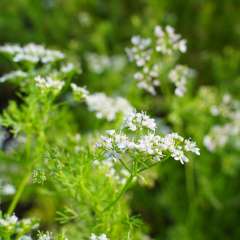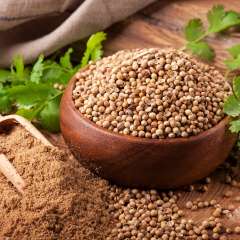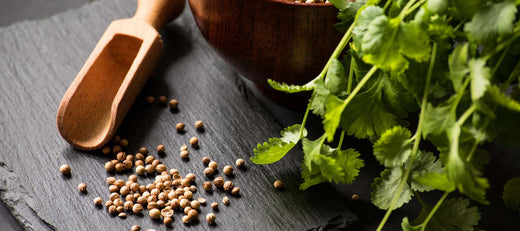I don’t know about you, but salsa just wouldn’t be salsa without cilantro. Cilantro adds fresh flavor to soups, sauces, dressings, as a garnish, and so much more, but having access to this herb, when fresh, can be a challenge. Cilantro (also known as coriander) is quite temperature-sensitive, so the window for growing it outdoors is slim. However, some solutions are available so you can always have the bright flavor of cilantro in your cuisine.
Cilantro (Coriandrum sativum) is one of the oldest known herbs. It’s native to southern Europe and Asia, but its seeds have been found in ancient Egyptian tombs. It is a member of the carrot family and is now cultivated in many parts of the world. Most of us know it as a popular herb in Mexican and Asian cuisine.
How to Grow Cilantro from Seed
Cilantro is an annual herb that only grows well during the cooler months of the year. The tricky part is that it will not germinate in soil that is less than 55°F and will bolt very quickly at temperatures over 85°F. This makes the timing of planting a challenge, especially in warm zones. Here in New York, it can be planted in late April and will grow happily until mid-July. If you live down South, you are better off planting it in the fall to grow into the winter.
Cilantro seeds should be directly sown into the garden or container as the plant does not transplant well. It likes well-draining soil, so amending soil with sand to improve drainage is a good idea. Plant seeds about an inch apart and cover with half an inch of soil. Keep seedlings moist but not too wet. Thin the seedlings to about 6 inches apart to give the plants room to grow and allow good airflow.
Cilantro only needs about 4 to 5 hours of sun a day, making it a good option for a shadier part of your garden or your patio. Containers are a great option for growing cilantro since you can move them indoors when the temperature gets too hot to extend your harvest. Another option is to plant seeds in succession, a couple of weeks apart, for an extended harvest.
When to Harvest Cilantro

The leaves of the cilantro plant are what are most often used in cooking. You can begin harvesting when the plant reaches about 6 inches tall. Since it grows so quickly, this will be about four weeks from planting. You can pinch off the larger leaves at the bottom of the plant, leaving at least two-thirds of the foliage to continue growing.
If the main stems of the plants are getting thicker and “woodier” and the leaves start getting thinner looking almost like dill, then the plant is getting ready to bolt. The flavor of the leaves will start to become bitter and eventually the plant will produce white flowers. Bees and butterflies love coriander flowers, so all is not lost if you allow the plants to continue growing. You can also harvest the resulting seeds either for replanting or for use as a seasoning.
How to Store Cilantro
The best way to store your fresh cilantro leaves is to keep them still on the stem, unwashed in the refrigerator in a jar with about an inch of water loosely covered with a clean plastic bag. Wash the leaves only when you are ready to use them. They will keep for up to 2 weeks with this method.
Another option is to wash, chop, and air dry your cilantro leaves and then place them in an airtight container lined with a paper towel. This way you will have clean, chopped cilantro ready to use for up to two weeks.
Since cilantro is so delicate, it doesn’t freeze well; however, you can blend it with some water or olive oil and freeze it in ice cube trays then transfer it to a zip lock bag and store it in the freezer for use in dressings or soups.
How to Save Cilantro Seeds

Cilantro seeds, known as Coriander have a unique citrusy nutty flavor that particularly compliments beans and roasted or grilled vegetables. They work great with roasted beef and chicken and are commonly used with rice dishes and curries in Oriental and Asian cooking. They look and are used much like peppercorns that are ground fresh for use. They have a more potent, sharper flavor if used in the green stage. If harvesting the seeds when green, they can be kept in an airtight container in the fridge for a couple of weeks, or you can freeze them.
If you want seeds for replanting or to keep longer-term as a seasoning, leave the seeds on the plant until most of them have started to turn brown then cut off the seed heads leaving part of the stem. Place the heads in a paper bag and hang them upside down until the seeds have fallen out of the seed pods and into the bottom of the paper bag. Store the seeds in an airtight container in a cool, dry place. Grind them just before use.
Cilantro is one of my favorite cool-weather herbs. It takes a little planning, but this easy-to-grow herb will reward you with fresh flavor that enhances the rest of your garden harvest.

Written by: Jennifer C., staff writer located in the Hudson Valley of New York, Zone 6b
























